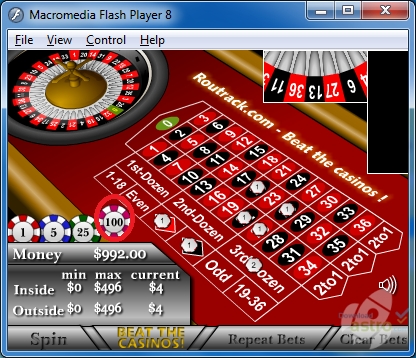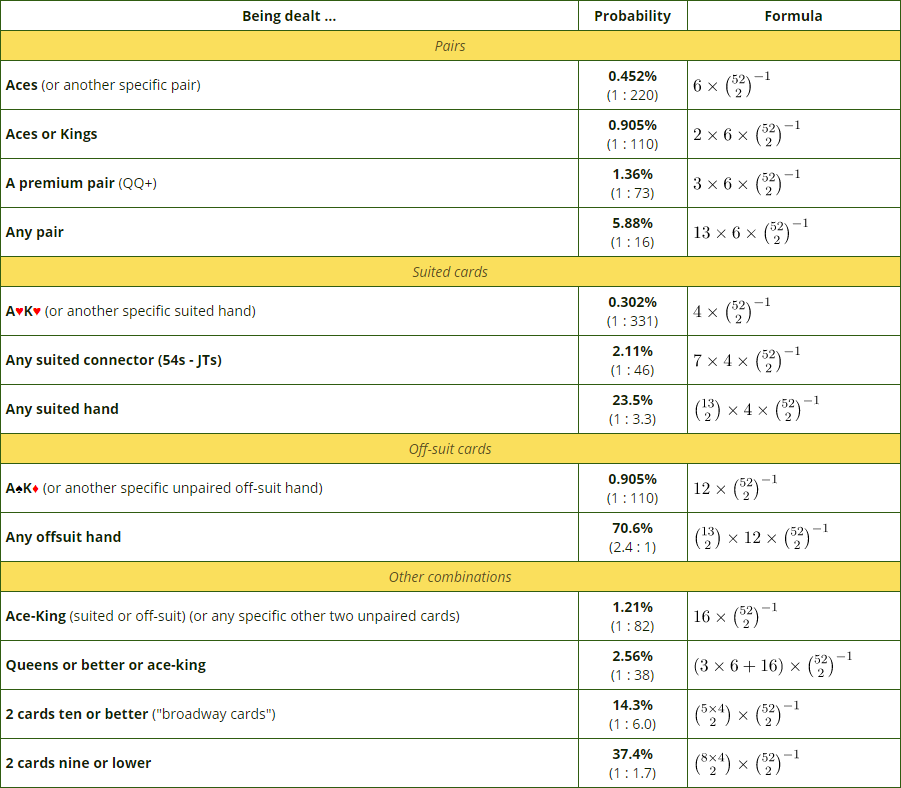Texas Holdem Same Suit
A royal straight flush is when you have 10-J-Q-K-A in your hand, all of the same suit. This is the best there is, no bluffing about it. Although if you are a good bluffer, you might smile as brightly as the sun when you look at your hand and realize you don't have this, then immediately go.well, poker-faced. Straight - Five cards in sequence, but not all of the same suit is a straight. An example is 9♥, 8♣, 7♠, 6♦, 5♥. Three of a Kind - This combination contains three cards of the same rank, and the other two cards each of a different rank, such as three jacks, a seven, and a four.
 Suited - Cards of the same suit.
Suited - Cards of the same suit.A standard poker deck contains of fifty-two cards. There are four different suits, which are clubs, diamonds, hearts and spades. In a traditional deck, the hearts and the diamonds are printed with red ink, and the spades and clubs are printed with black ink. This can lead to a considerable amount of confusion and misreading of hands, because there are four independent and distinct suits, but they are represented by only two different colors. This has led to some casinos to change to a four color deck, which many players prefer. In a four color deck, hearts are red, diamonds are blue, spades are black, and clubs are green. Each suit, regardless of what color is used to represent it, consists of thirteen sequentially ranked number and picture cards, which run from deuce (represented by the number 2) to ace (represented by the letter A). This way, there are exactly the same number and type of cards in the deck for each suit.
A hand consisting of cards of the same suit is referred to as suited, while a hand consisting of cards of different suits is referred to as offsuit, or unsuited. The distribution of the suits matters, because players can make a strong hand, called a flush, by collecting five or more cards of the same suit. Depending upon the situation, and the type of poker game being played, a flush can be a very valuable hand and a very hard hand to beat.
A flush consists of any five non-sequential cards of the same suit. A flush draw consists of any four suited cards, with the knowledge that one more card of that suit is needed to complete the flush. If you hold three suited cards, with at least two more cards left to come, you hold a very low quality flush draw. This type of draw is commonly called a “three-flush,” or a “runner-runner flush draw,” and it is a very difficult flush to complete, because it has to come perfect-perfect in order for you to complete a flush by the time the hand is over. Since the flush is such a powerful hand, and the flush draw can also be a powerful draw, most players are eager to draw to a flush, and are happy when they complete it.
The earlier in the hand you pick up a four-flush, the more chances you will have at completion, and the more valuable your draw becomes. Because of this, players will take into consideration whether or not their starting hand is suited when deciding on whether or not to play. In a Seven Card Stud game, players are dealt a three card starting hand, and will occasionally be dealt a three-flush on third street. Since it is a seven card game, this can be a very strong starting hand, provided that there are not a lot of other cards of that suit out of play already. In a Hold’em game, players start with a two card starting hand, which also benefits from being suited. In fact, many players will use the fact that a hand was suited, or suited and connected, in order to justify playing a weak hand. Overvaluing suited cards is commonplace among less experienced players, especially in a Hold’em game, where being suited preflop only adds a couple of percentage points to your rate of hand completion. Of course, there are many situations where being suited creates the added value needed to play a hand in a certain spot. But you need to be realistic about how much value being suited actually adds, if you are going to use it as a justification to play the hand.
In most poker games, a flush is beaten only by a higher flush, a full house, four of a kind, and a straight flush, and it beats all other hands. The exceptions to this are certain types of lowball games, where high hands are not desirable, and a variety of stripped deck five card stud, which is sometimes called Mexican Poker. This name is nor used outside of the United States, and it is a little misleading. The game is popular widely throughout Latin America, not only in Mexico, where it is referred to simply as “Pokar.” In this game, the hand rankings are slightly different, because a flush beats a full house instead of the reverse.
Usage: Held Suited Connectors, 7-2 Offsuit


Previous Poker Term: Suck Out
Texas Holdem Same Suite
 Next Poker Term: Sweat
Next Poker Term: SweatPlaying poker is about playing the odds. The following list gives the odds for outcomes in Texas Hold’em hands. When you realize how heavily the odds are stacked against you, you may want to rethink going all-in before the flop with two suited cards. Use the odds to your advantage:
Texas Holdem 5 Same Suit
1 percent (1-in-100): Percentage of time that no player holds an Ace or a King at a table in a 10-handed game
1 percent (1-in-100): Percentage of time that if you hold two suited cards, you’ll flop a flush
6 percent (about 1-in-20): Percentage of time that five community cards will give pocket suited cards a flush
6 percent (about 1-in-20): Percentage of time that you’ll be dealt a pocket pair
8 percent (about 1-in-12): Percentage of time that you’ll hit at least trips after having a pair on the flop
12 percent (about 1-in-8): Percentage of time that you’ll flop trips if holding a pocket pair
12 percent (about 1-in-8): Percentage of time that two more cards will flop in the same suit as a suited pocket pair
19 percent (about 1-in-5): Percentage of time that the five community cards will at least trip your pocket pair
32 percent (about 1-in-3): Percentage of time that you’ll pair one of your cards on the flop (with no pocket pair)
33 percent (about 1-in-3): Percentage of time that you’ll make a full house or better after having trips on the flop
35 percent (about 1-in-3): Percentage of time that you’ll make a flush on the turn or river if you have four cards to a flush after the flop